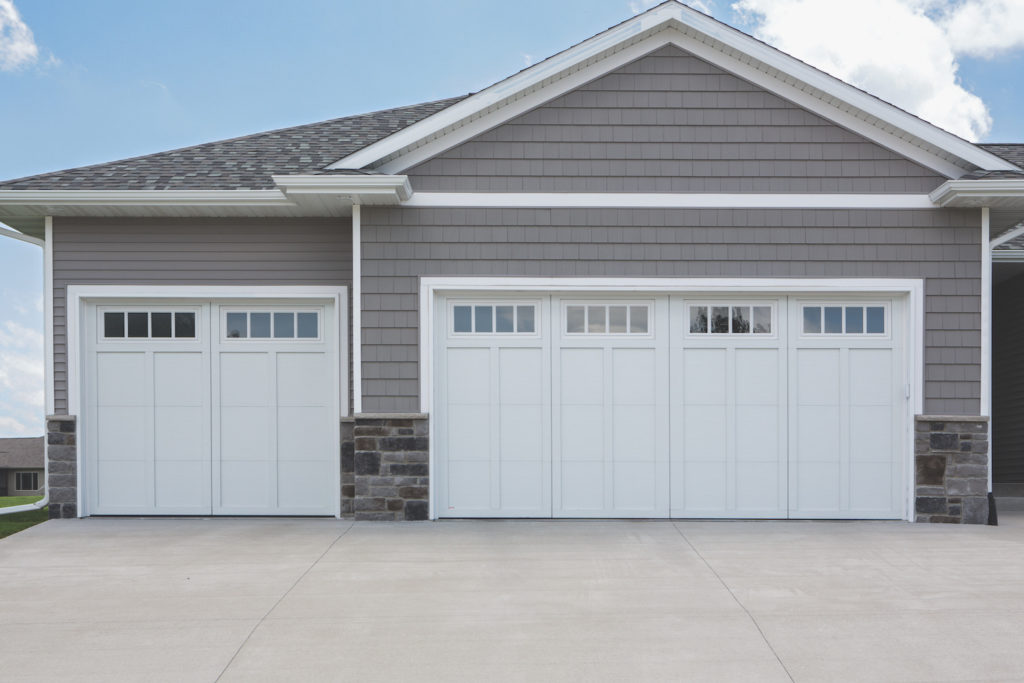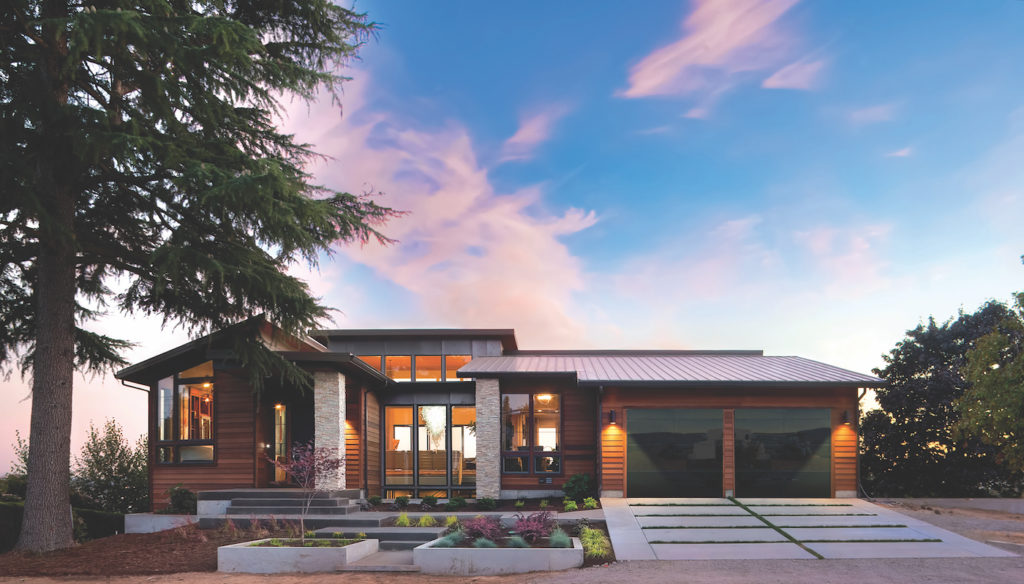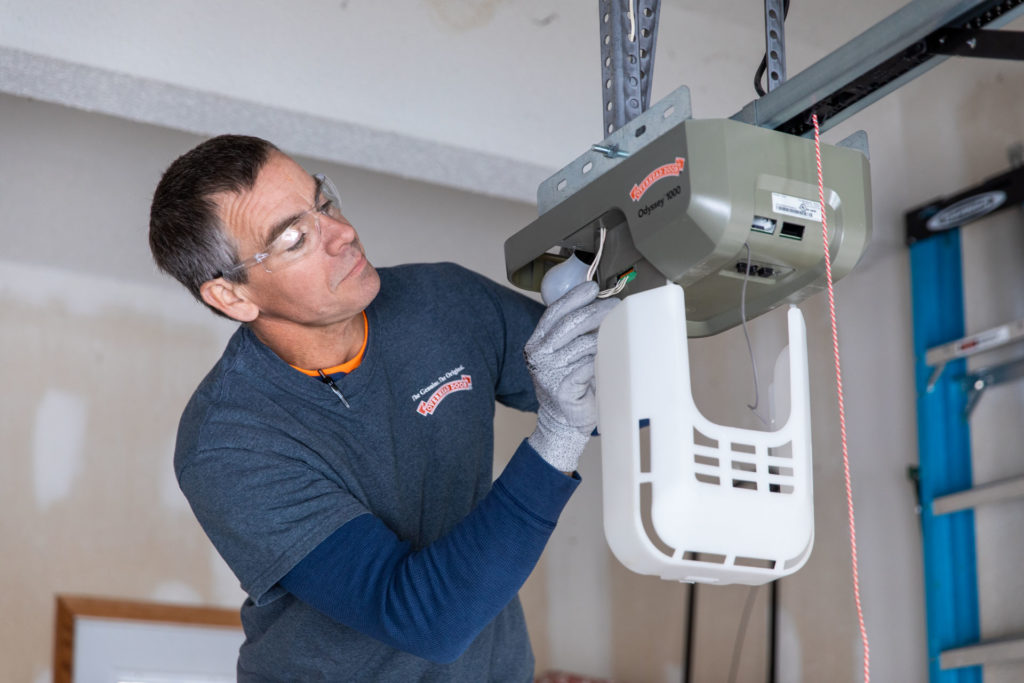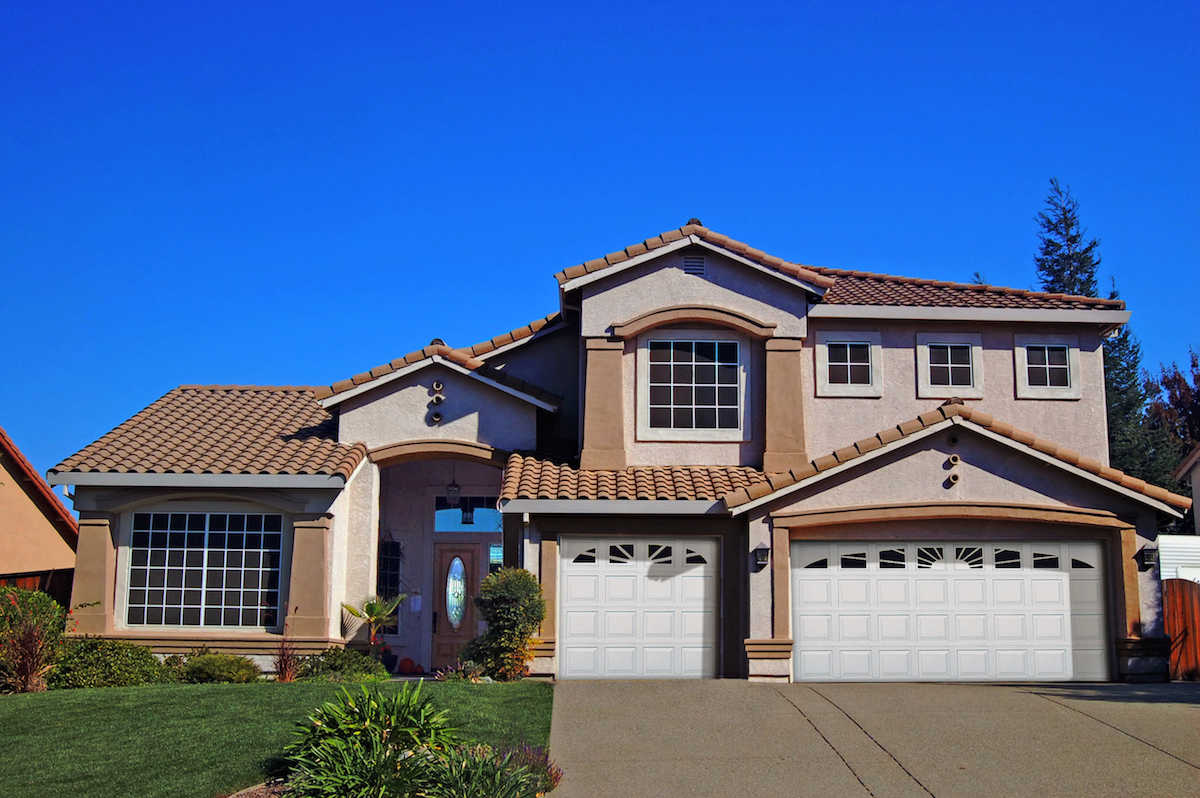Inevitably, springs will deteriorate and wear out over time. When they do, they’re a potential hazard that can cause severe injuries from a falling door or flying metal. Because of this, you need to ensure that your springs are tested and inspected regularly by experienced technicians. Even if your door has multiple springs and only one is broken, you should replace both to eliminate risk. The benefits of regular maintenance will not only keep you safe, but it’ll also keep your garage door working longer.
Garage doors are the largest, heaviest moving part of your home
Understanding its safety features is critical to keeping you and your family safe, as well as preventing damage.
If you’re ever concerned about the safety of your garage door, please don’t hesitate to Overhead Door Company of Central Arizona™️
Garage Door Safety Tips
If your cables are frayed or worn when you check them, that could mean that they are about to break. Please be sure to check them frequently, and again, please rely only on trained technicians and service people to replace them. High spring tension can be potentially dangerous to you and your door.
Noisy springs can be caused by everyday wear and tear. A spray-on lubricant can be used to cut noise and squeaking. If the squeaking continues after applying the lubricant, call a professional garage door installer for service.
We ask that you please do not install your own garage door unless you have trained professional experience. Installation carries potentially high levels of risk, and The Door & Access Systems Manufacturers Association (DASMA) suggests that you only use professional technicians. Attempting your own repairs can cause injury and/or damage to your door, home, or car.
We ask that you install a safety cable if you don’t have extension springs on your door. If you do install a safety cable, it would run through the spring and be secured to the wall and/or ceiling at each end. Most families have their doors closed often, which leads to high tension to the springs. If your springs are damaged or broken, they can cause serious damage or injury to your home or family. If you’re not sure what you need, or if you have any additional issues or questions, call your local Phoenix garage door installers for a safety inspection and professional recommendations to keep your space secure.
Several problems may pop up as a result of a “struggling” door. In most cases, you’ll need assistance from a professional technician. Spring systems offer potential danger and should only be repaired by qualified experts.
It’s imperative that you don’t put your fingers between door panels. This mistake causes injuries to thousands of homeowners (or their family members) each year. In the event that you don’t electric garage door opener, utilize your garage door handles or other safe gripping points
When your door is closed garage door springs, in particular, are under extreme tension. If your springs suffer damage or become broken, your home or the people around you may be at serious risk. Because of this, a trained door systems technician should be the only one to adjust your garage door.
It may seem like a good idea for saving money, but installing old tracks brings huge potential risk. Old tracks make it likely that your door won’t fit onto the track, which could lead to collapse, derailment, or other safety issues. In addition to being dangerous, these repairs will likely end up costing you more than a new track.
Maintenance from experienced technicians can keep your door operating in an efficient, safe manner for the long haul. We encourage scheduling an annual visit with a professional to make sure that your door is operating at its full capabilities.
Safety Tips for Garage Door Openers
To avoid injuries, especially to children and pets, wait until your door is completely shut before leaving the garage or driveway.
If you aren’t attentive, reinforcement brackets can cause damage to your garage door. It’s recommended that you check your installation manual for further instructions.
If your door is operating slower than normal, it doesn’t necessarily mean that your garage door opener is weak. Before wanting something more “powerful”, call a properly trained technician to assess the issue and provide the correct solution.
You should install photo-eyes more than six inches above the garage floor. If your photo-eyes aren’t properly installed, you risk damage or injury from a person or pet not being detected.
Make sure that your garage door opener is placed at least five feet from the floor or higher. This helps prevent accidental button pushes from younger children in the house.
It’s imperative that your children don’t play with remote controls. It’s recommended that, after installation, you warn your kids about the possible risks of remote misuse. We’ve often found that the best way to communicate this is to say that the remote is “off-limits”.
We typically recommend routine maintenance at least once per month for your garage door opener. This helps assure its safety and functionality.
Additional Tests & Safety Measures
You can perform a routine visual inspection on your door. While we recommend leaving any repairs to qualified technicians, monioriting your door on your own time will help you spot any issues with springs, rollers, cables, pulleys, and other hardware.
There is a test that can be performed to check a door’s balance. When your door is closed, try lifting the door (if you have a remote opener, use the release mechanism to allow you to operate the door by hand). You should be able to lift the door easily, with little resistance. Additionally, your door should be able to stay open about 3 to 4 feet above the floor without being held. If your door doesn’t pass these assessments, it could mean that your door needs adjustment.
According to federal law, every garage door opener needs to include compliant safety features that match the latest standards in UL 325 (Underwriters Laboratories). If you want to test your reversing feature, you can perform an at-home test. First, test the balance (detailed above). If your door passes these tests, you can proceed to the reversal test.
Completely open the door and place a 1-1/2″ thick piece of wood (a 2×4 laid flat) near the center of the door on the floor. Once you’ve done this, press the wall button (or transmitter) close to the door. The door needs to hit the wood in order to reverse. If the door doesn’t reverse, it must be repaired or replaced, and soon. (Note that the bottom of the “one-piece doors” must be rigid enough to reverse when it comes into contact rather than close completely).
If you want to test the force setting of your door, you just need to hold the bottom of the door as it’s closing. If it doesn’t reverse immediately, your force setting is what we call “excessive” and needs to be adjusted.
Safety is our top priority, and that’s especially true for our customers with children and pets. Thankfully, most modern garage door openers come standard with additional safety features. As an example, many door openers include edge sensors (aka “photo eyes”) that are designed to protect against entrapment.
With that being said, adding more safety devices doesn’t necessarily make an old opener compliant with current UL Standards. That said, adding additional safety devices does not always make an old opener meet current UL standards. Proper installation and adjustment is key to a safe and functional garage door. If you have questions, please don’t hesitate to contact Overhead Door Company of the Central Arizona™️.
- Garage door springs, as well as the brackets, cables, and other hardware attached to the springs, are under an extreme amount of tension and should only be adjusted or repaired by trained professionals. Improper handling can lead to serious damage or injury.
- Adjustments to the springs above your door (also called “torsion springs”) should be handled by a professional garage door serviceman. To avoid injury, please don’t repair or adjust these springs yourself.
- A safety cable can, and should, be installed on your extension spring. This spring runs along the side of your door and acts as a safety backup in the event of a broken spring.
- Please do not adjust, remove, or loosen any screws on the bottom brackets of the door. These brackets are also under extreme tension as they are connected to the springs.

Need additional help?
The experts at Overhead Door Company of Central Arizona™️ are available 24/7 to assist you. and keep your garage door safety a priority. Reach out to us today and for customized recommendations individually suited to the issues you're facing.



